Counties include: Butte, Colusa, Del Norte, El Dorado, Glen, Humboldt, Lake, Lassen, Mendocino, Modoc, Nevada, Placer, Plumas, Sacramento, Shasta, Sierra, Sutter, Siskiyou, Tehama, Trinity, Yolo, and Yuba
Provides affordable solutions for income-qualified residents and those in disadvantaged communities to purchase or lease cleaner, more fuel-efficient cars and trucks.
 Clean Cars 4 All - Sacramento Metropolitan Air Quality Management District
Clean Cars 4 All - Sacramento Metropolitan Air Quality Management District
The Sacramento Metro Air Quality Management District (SMAQMD) administers the
Clean Cars 4 All program in the Sacramento area. This is a traditional vehicle “Scrap & Replace” grant program designed for qualified lower-income participants. The Sacramento program has two components: “Scrap & Replace,” which offers grants up to $9,500 applied towards the purchase of a new or used zero or near-zero emission replacement vehicle, and up to $2,000 for the purchase and installation of an electric vehicle charging system.
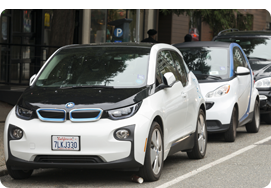 Clean Vehicle Rebate Project (CVRP)
Clean Vehicle Rebate Project (CVRP)
Funding for Individuals & Families
Get up to $7,500 to purchase or lease a new plug-in hybrid, battery electric, or fuel cell electric vehicle. CVRP is available to income-eligible California residents. Increased rebates for low-income applicants available!
To apply for a CVRP rebate and for additional eligibility information visit the official
CVRP program page.
Businesses, Nonprofits, and Federal Entities
Get up to $4,500 for the purchase or lease of one eligible zero-emission and plug-in hybrid light-duty vehicles. For more information on CVRP opportunities and additional eligibility guidelines, visit the Businesses, Nonprofits, and Federal Entities webpage on the official
CVRP program page.
Clean Vehicle Rebate Project (CVRP) for Public Fleets
Local, State, and tribal government entities can get up to $7,000 to purchase or lease new advanced light-duty technology vehicles, including plug-in hybrid electric (PHEV), battery electric (BEV), and fuel cell electric vehicles (FCEV) - up to 30 rebates per year.
For more information on CVRP for public fleets, and eligibility guidelines visit the Public Fleets webpage on the official
CVRP program page.
Testimonial Video
 Financing Assistance for Low-Income Consumers
Financing Assistance for Low-Income Consumers
Clean Vehicle Assistance Program – CVA Program (Statewide)
The CVA Program is administered by the Beneficial State Foundation (BSF) and offers eligible applicants price buy-down grants of up to $7,500 and affordable financing opportunities (≤ 8% interest) towards the purchase of eligible clean vehicles, including up to $2,000 for a Level 2 home charger installation for eligible vehicle purchases or a $1,000 prepaid charge card and a free portable Level 1 charger.
For more information on the CVA Program grant and loan application information, please visit the official
CVA Program page.
Driving Clean Assistance Program (Regional – Sacramento & Yolo Areas)
The Community Housing Development Corporation (CHDC) runs the regional Driving Clean Assistance Program that offers financing assistance towards the purchase of eligible clean vehicles to residents in disadvantaged communities throughout the Bay Area and Sacramento. The program provides eligible residents a buy down opportunity of up to $7,500, low-interest loan opportunities, and up to $2,000 for a Level 2 home charger installation for eligible vehicle purchases or a $1,000 prepaid charge card and a free portable Level 1 charger, and additional financial and advanced technology education training.
To verify program eligibility please visit CHDC’s
Driving Clean Assistance Program Eligibility webpage.
Lessons Learned and Project Highlights
 Loan Assistance Program
Loan Assistance Program
Loan assistance is available to qualified trucking fleets with 10 or fewer heavy-duty vehicles. Additional program criteria requires that an eligible trucking company meet basic requirements by qualifying as a small business (fewer than 100 employees), generate less than $10 million in annual revenue, and operate primarily in California.
Loan assistance is available for:
- Used and new trucks with 2010 and newer model year engines CARB-certified to 2010 and later model year emission standards.
- The engines can use diesel fuel, compressed natural gas (CNG), liquefied natural gas (LNG), or other fuels including zero-emission technology.
- Trailers may be eligible for financing only in conjunction with an eligible tractor.
To apply to this program:
- The borrower applies for a loan at a participating CalCAP lender by filling out the Borrower Eligibility Criteria and Self-Certification Form (Sample Form). CalCAP lenders and truck dealerships may be able to assist the borrower in completing this form. In addition, the borrower completes the lender’s required loan application forms.
- If the borrower qualifies based on the lender’s loan underwriting standards, loan documents are prepared and signed by the borrower and lender.
- Lender disburses funds to the borrower.
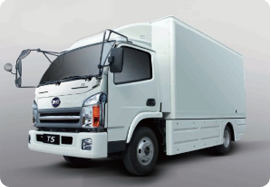 Hybrid & Zero-Emission Truck & Bus Voucher Incentive Project (HVIP)
Hybrid & Zero-Emission Truck & Bus Voucher Incentive Project (HVIP)
Statewide program provides vouchers for California purchasers of up to $175,000 for zero-emission buses, up to $300,000 for fuel cell buses and Class 7 and 8 trucks, and up to $45,000 for Low NOx 11.9 liter natural gas engines. The program helps offset the higher costs of clean vehicles and additional incentives are available for providing disadvantaged community benefits.
For more information visit
California HVIP website
 Clean Off-Road Equipment Voucher Incentive Project (CORE)
Clean Off-Road Equipment Voucher Incentive Project (CORE)
The Clean Off-Road Equipment Voucher Incentive Project (CORE) is intended to accelerate deployment of advanced technology in the off-road sector by providing a streamlined way for fleets to access funding that helps offset the incremental cost of such technology. CORE targets commercial-ready products that have not yet achieved a significant market foothold.
For more information visit
CORE website
 The Funding Agricultural Replacement Measures for Emission Reductions (FARMER)
The Funding Agricultural Replacement Measures for Emission Reductions (FARMER)
The Funding Agricultural Replacement Measures for Emission Reductions (FARMER) Program provides funding through local air districts for agricultural harvesting equipment, heavy-duty trucks, agricultural pump engines, tractors, and other equipment used in agricultural operations.
For more information visit
FARMER website
Clean Mobility Incentives
Funding available through community projects to improve clean transportation and mobility choices for residents of disadvantaged and low-income communities.
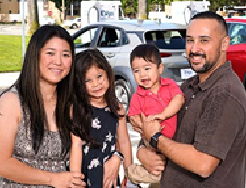 Clean Mobility Options Voucher Pilot Program (CMO)
Clean Mobility Options Voucher Pilot Program (CMO)
Program Administrator CALSTART, $37,000,000 (CARB Contribution)
Voucher-based funding for low-income, tribal, and disadvantaged communities
- Ensures mobility projects are responsive to community-identified needs and funds zero-emission shared and on-demand services such as carsharing, ridesharing, bikesharing, and innovative transit services
- Two voucher types available to eligible public agencies, nonprofit organizations, and tribal governments:
- Up to $1,000,000 for Mobility Projects Vouchers
- Up to $50,000 for Community Transportation Needs Assessment Vouchers
- In 2020, the program’s inaugural year, $21.15 million was awarded to communities for both voucher types.
For more information visit
Clean Mobility Options website
 Sustainable Transportation Equity Project (STEP)
Sustainable Transportation Equity Project (STEP)
Multiple grantees, $19,500,000 (CARB Contribution)
Funding for low-income, tribal, and disadvantaged communities
- A new transportation equity pilot that aims to address community residents’ transportation needs, increase access to key destinations, and reduce greenhouse gas emissions by funding planning, clean transportation, and supporting projects.
- Funds include zero-emission carsharing, bikesharing, public transit and shared mobility subsidies, urban forestry, new bike paths, community transportation needs assessments, and active transportation education and outreach events. All projects incorporate significant community engagement during all phases of project planning, development, and implementation.
- In 2020, CARB awarded 11 grants totaling $19.5 million to community-based organizations and local governments across California
For more information visit
STEP Project website
Clean Transportation Demonstration and Pilot Projects
Demonstration and pilot projects aim to transform on-road and off-road fleets to clean technologies by demonstrating new technologies and advancing their commercial viability.
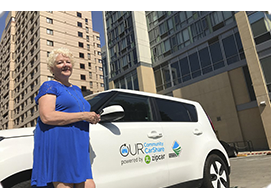 Our Community CarShare Sacramento
Our Community CarShare Sacramento
Sacramento Metropolitan AQMD, $5,863,847 (CARB Contribution)
Serves affordable housing communities in the Sacramento region
- Two-electric vehicles and two chargers are available to residents at each community site
- Subsidized transportation vouchers available for non-driving residents to use ride-hail services and public transit
- Eight community housing sites currently have service, with two new sites launching by the end of 2021
- Residents reserve vehicles for up to 3-hours for free or reduced cost to run errands, get to appointments, and take local trips
Lessons learned and project highlights
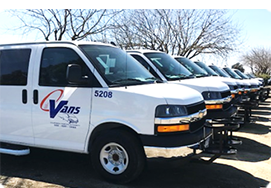 Agricultural Worker Vanpool Pilot - Statewide
Agricultural Worker Vanpool Pilot - Statewide
California Vanpool Authority (CalVans), $6,000,000 (CARB Contribution)
Agricultural Workers in low-income and disadvantaged communities statewide
- Deployed 154 new,15-passenger hybrid conversion vans that provide clean transportation to agricultural job sites in the San Joaquin Valley and other low-income agricultural areas in California
- Expanded CalVans San Joaquin Valley fleet by 60 percent (or 77 vans), for a total of 188 vans serving agricultural workers in eight counties
- The remaining 77 hybrid conversion vans funded serve other low income and disadvantaged agricultural areas in the state, such as the Coachella Valley and Salinas Valley
Lessons learned and project highlights
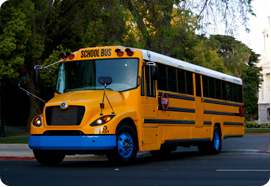
Clean School Buses
Sacramento Regional Zero-Emission School Bus Deployment Project - $7.6 million
Project includes twenty-nine (29) state-of-the-art zero-emission school buses with 29 charging ports. The project will serve as a large-scale success story that battery electric buses best serve school’s transportation needs, substantially reduce GHG emissions, and eliminate toxic emission exposures to children. Eight (8) eLion zero-emission buses are already in service and picking up students at Twin Rivers School District.
Lessons Learned and Project Highlights
Testimonial Video
Rural School Bus Pilot Project - $63 million
Statewide program to replace older diesel school buses with new cleaner technology options. Funding is also available for charging and/or fueling equipment. The program is designed to give preference to school districts in small and medium sized air districts.
- Year 1 – delivered 44 school buses – Complete
- Year 2 and Year 3 – Anticipate 160 school buses to be delivered – In Progress
- Year 4 – Anticipate 10 school buses funded
Lessons learned and project highlights
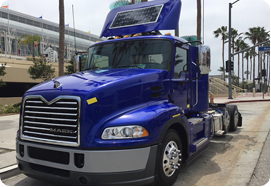
Clean Drayage Trucks
Battery Electric Drayage Truck Demonstration - $23.7 million
A statewide demonstration of forty-four (44) zero-emission battery electric and plug-in hybrid drayage trucks serving major California ports, including the Ports of Los Angeles and Oakland. The Class 8 trucks and charging infrastructure will be used in five air districts (South Coast, Bay Area, San Joaquin Valley, Sacramento, and San Diego) providing emission reduction benefits in key areas of California. The first trucks began operation early in 2018 with a second wave of deployments starting in 2019.
- This is the first large-scale demonstration of zero-emission Class 8 trucks that involves major manufacturers, including BYD, Kenworth, Peterbilt and Volvo
- Freight transport in California is a major economic engine for the state but also accounts for about half of toxic diesel particulate matter (PM 2.5), 45 percent of the emissions of nitrogen oxides (NOx) that form ozone and fine particulate matter in the atmosphere, and 6 percent of all GHG emissions in California
Lessons Learned and Project Highlights
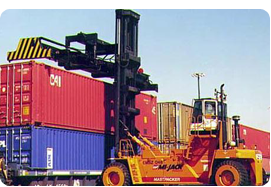
Clean Trucks at Rail Yards & Freight Distribution Centers
Opposed Piston Engine Class 8 Heavy Duty On-Road Demonstration - $7 million
This project will build and demonstrate opposed piston engine equipped Class 8 heavy-duty line haul trucks that will demonstrate the CARB ultra-low NOx emissions target (0.02 g / bhp-hr) with at least a 15% reduction in CO2 when compared to a 2017 commercial vehicle equipped with a current diesel engine.
- Walmart and Tyson Foods will run these demonstration vehicles in revenue service on regional long haul routes, based from disadvantaged community locations in the central valley and LA area
- This engine will improve fuel consumption and NOx emissions in segment by 30-50% once mass adoption is achieved
Lessons Learned and Project Highlights